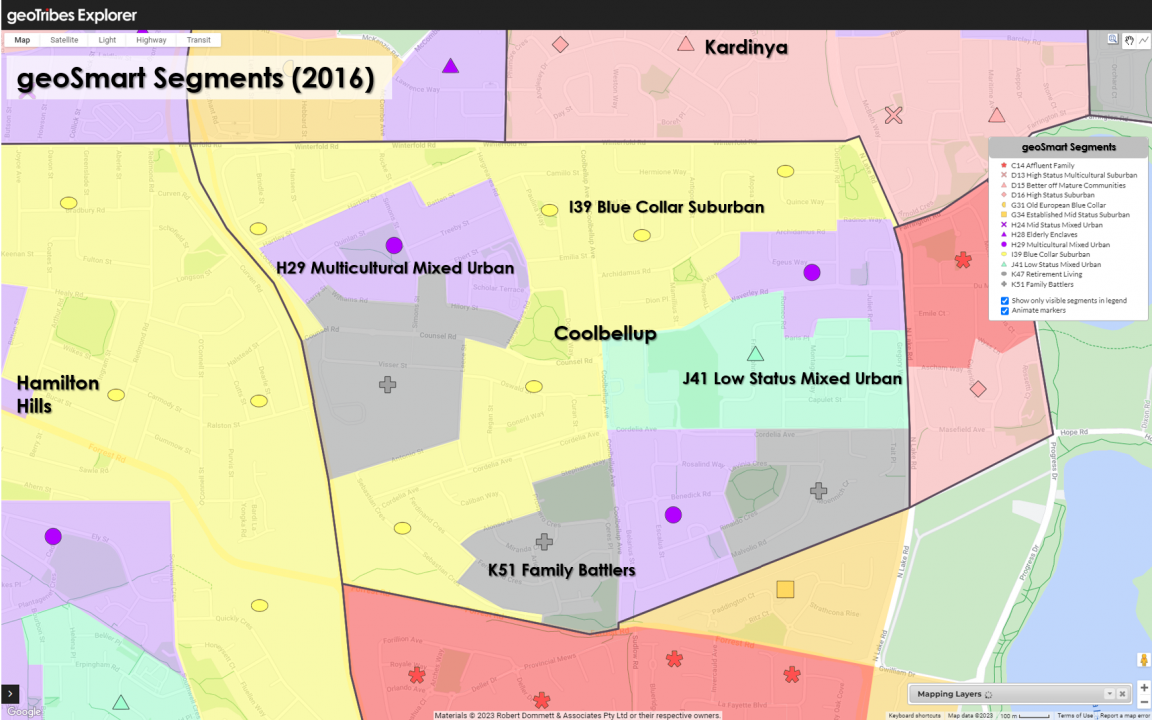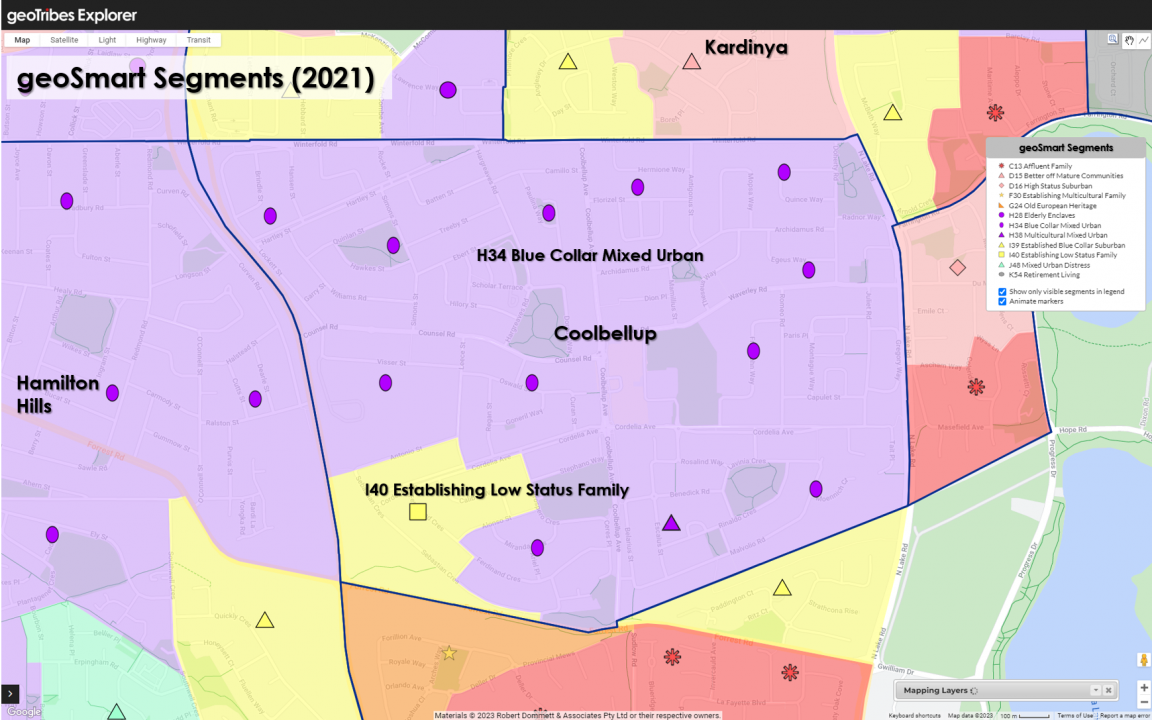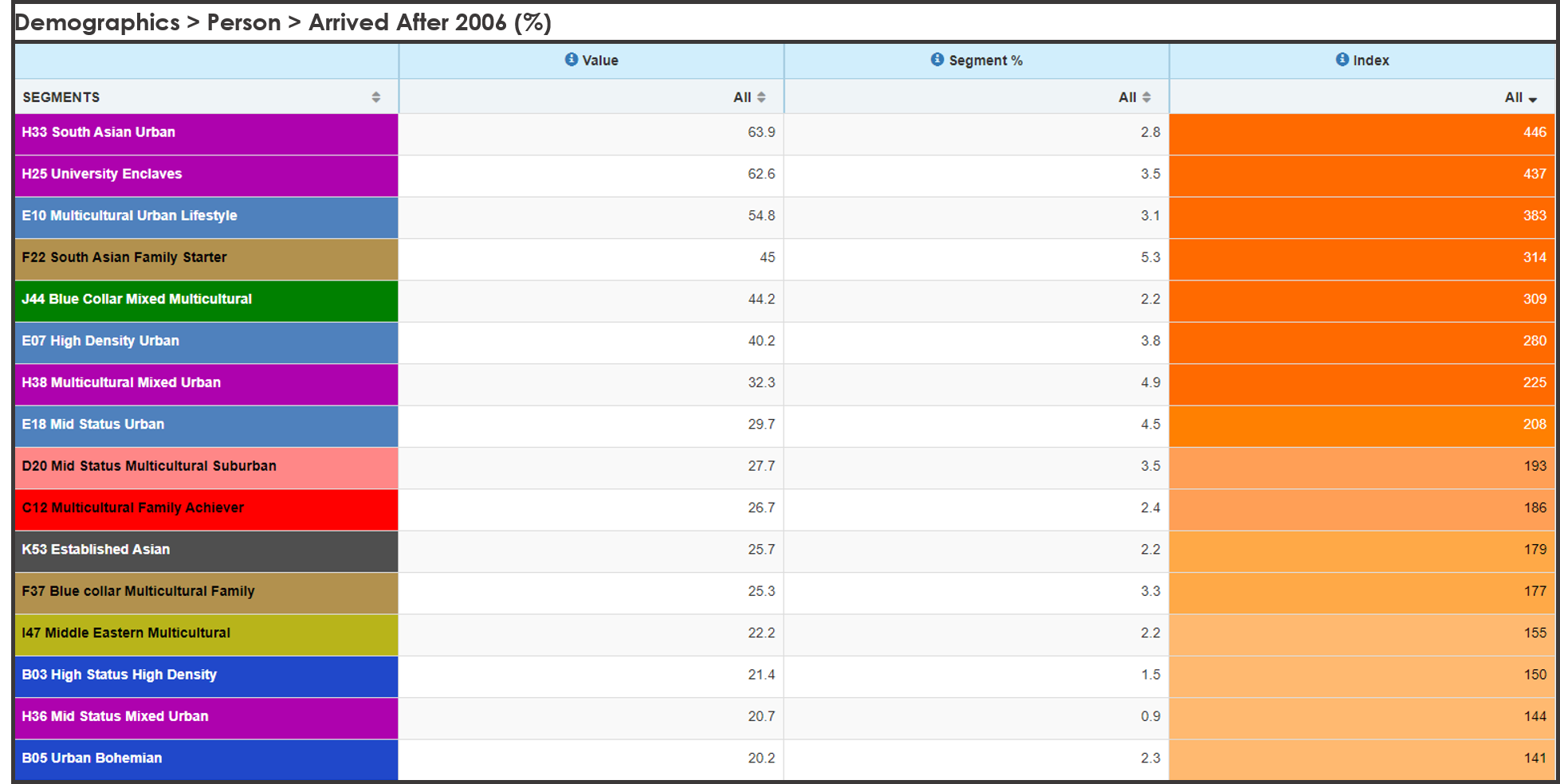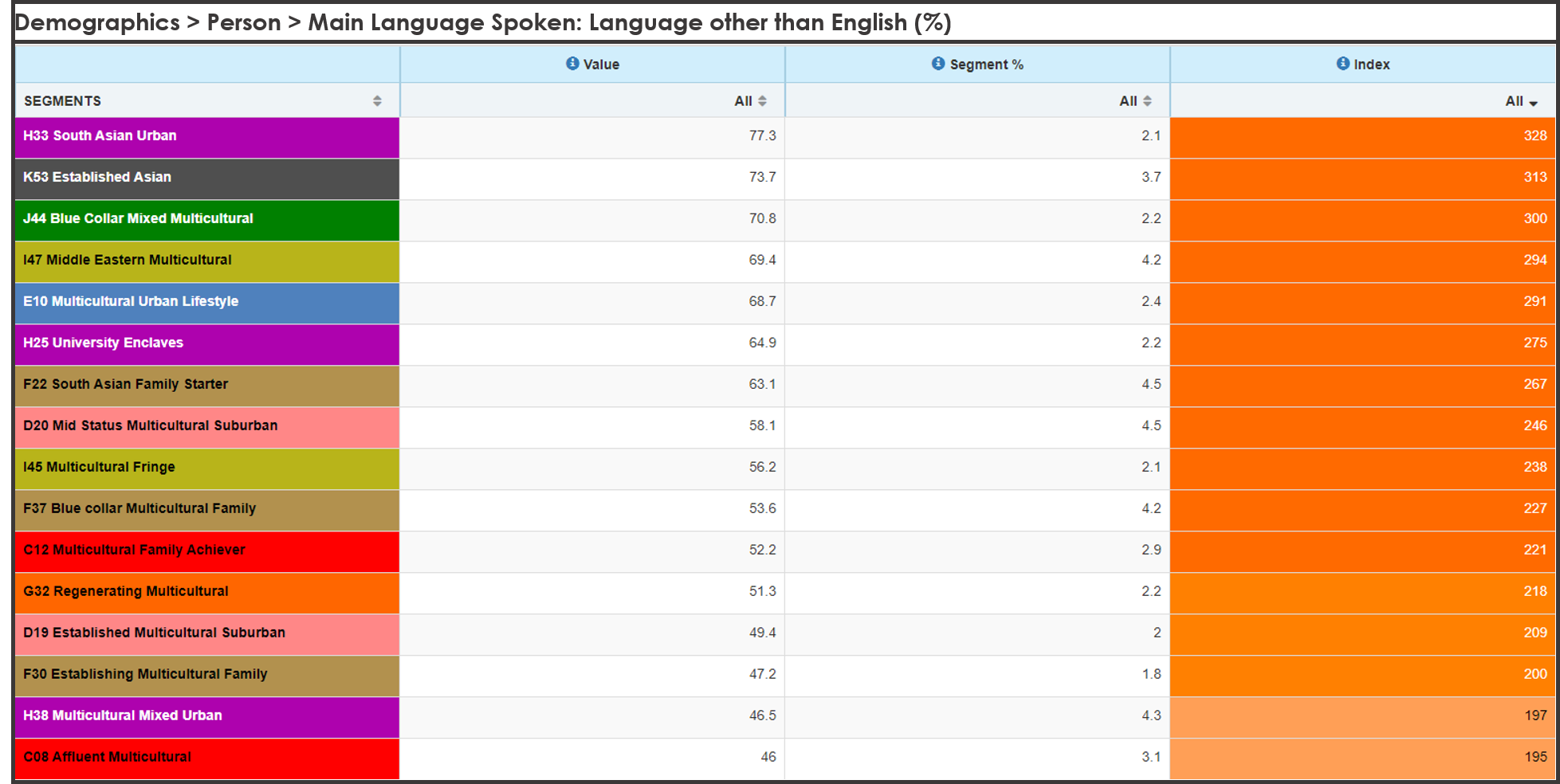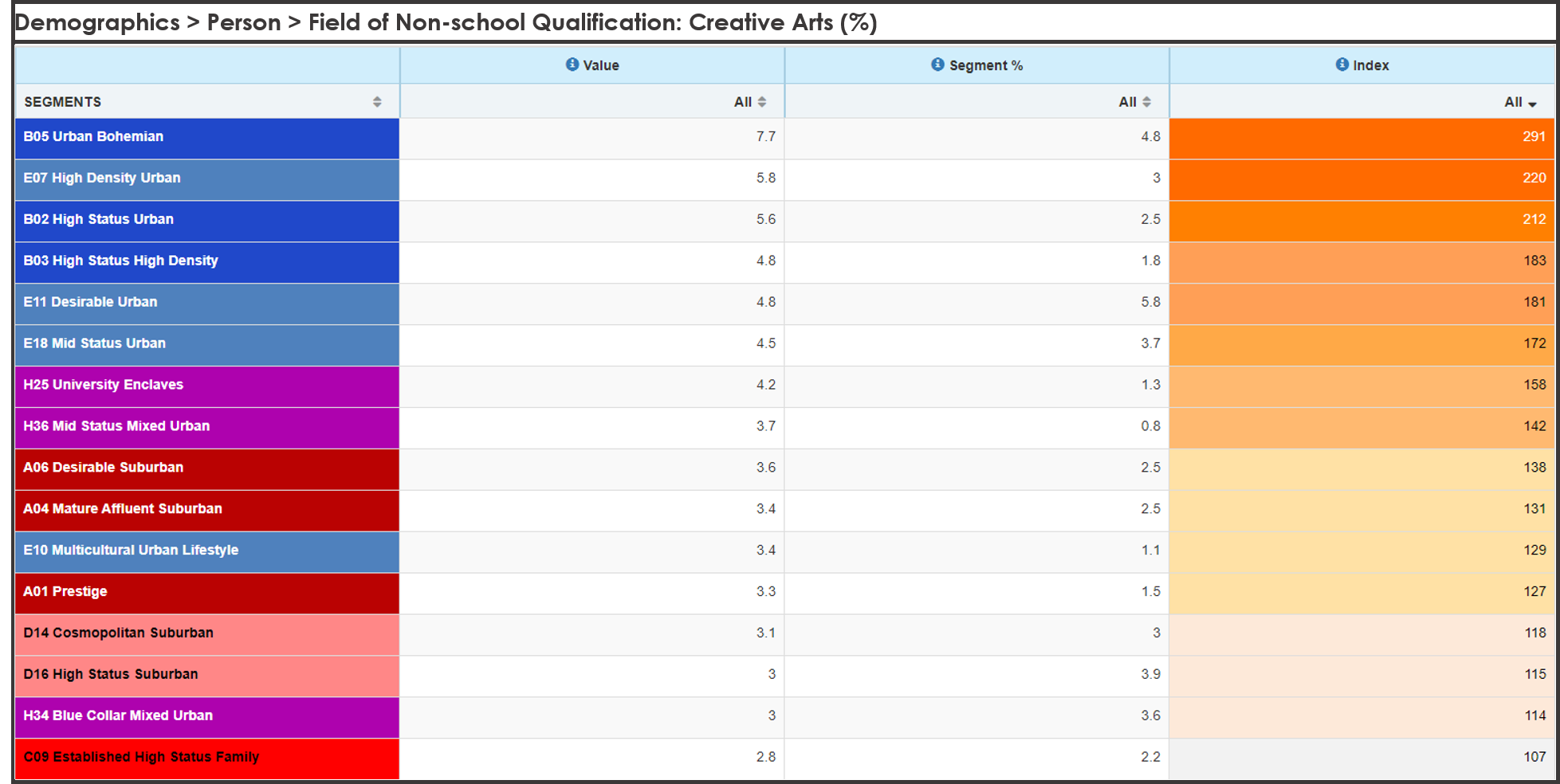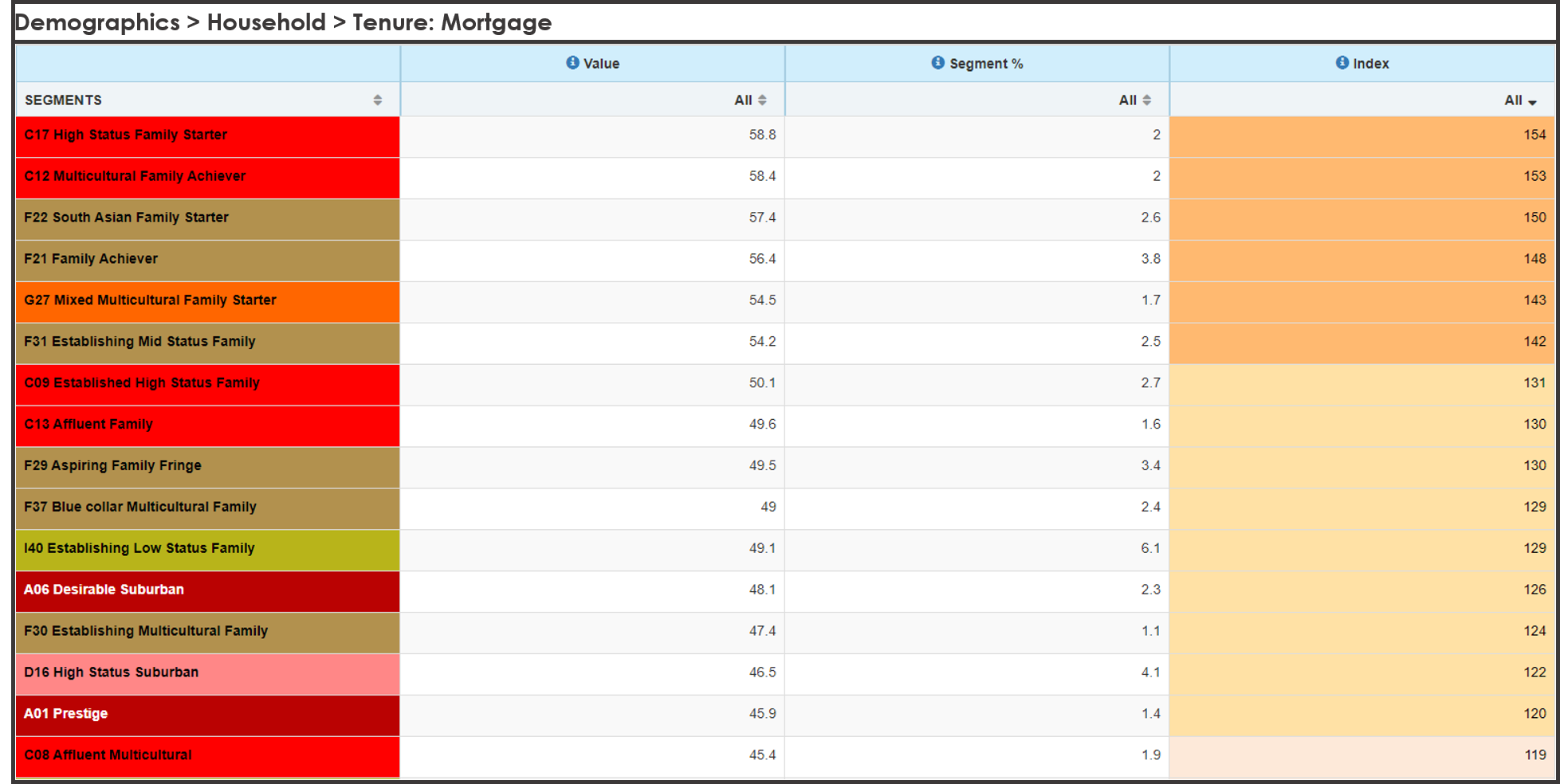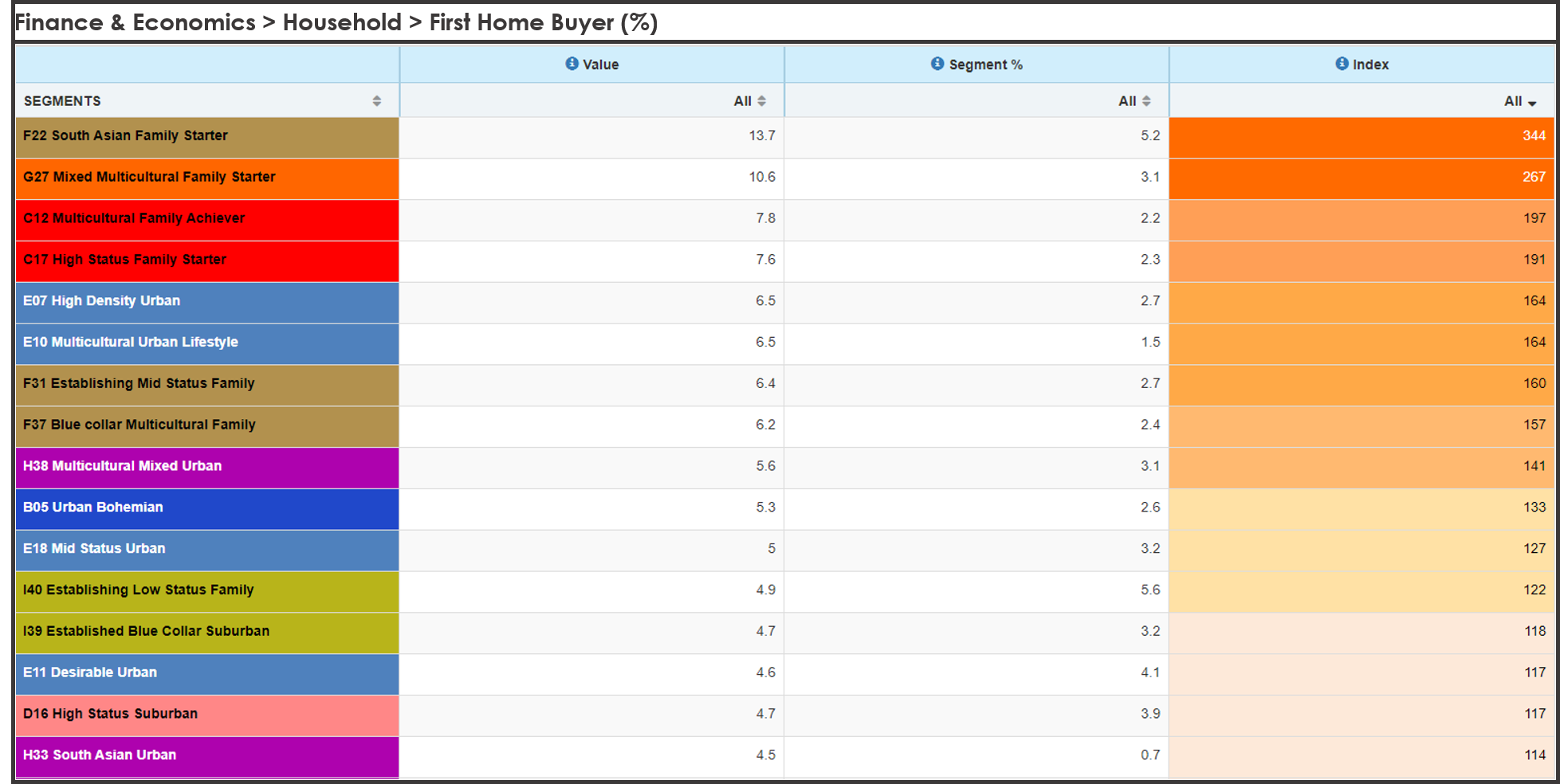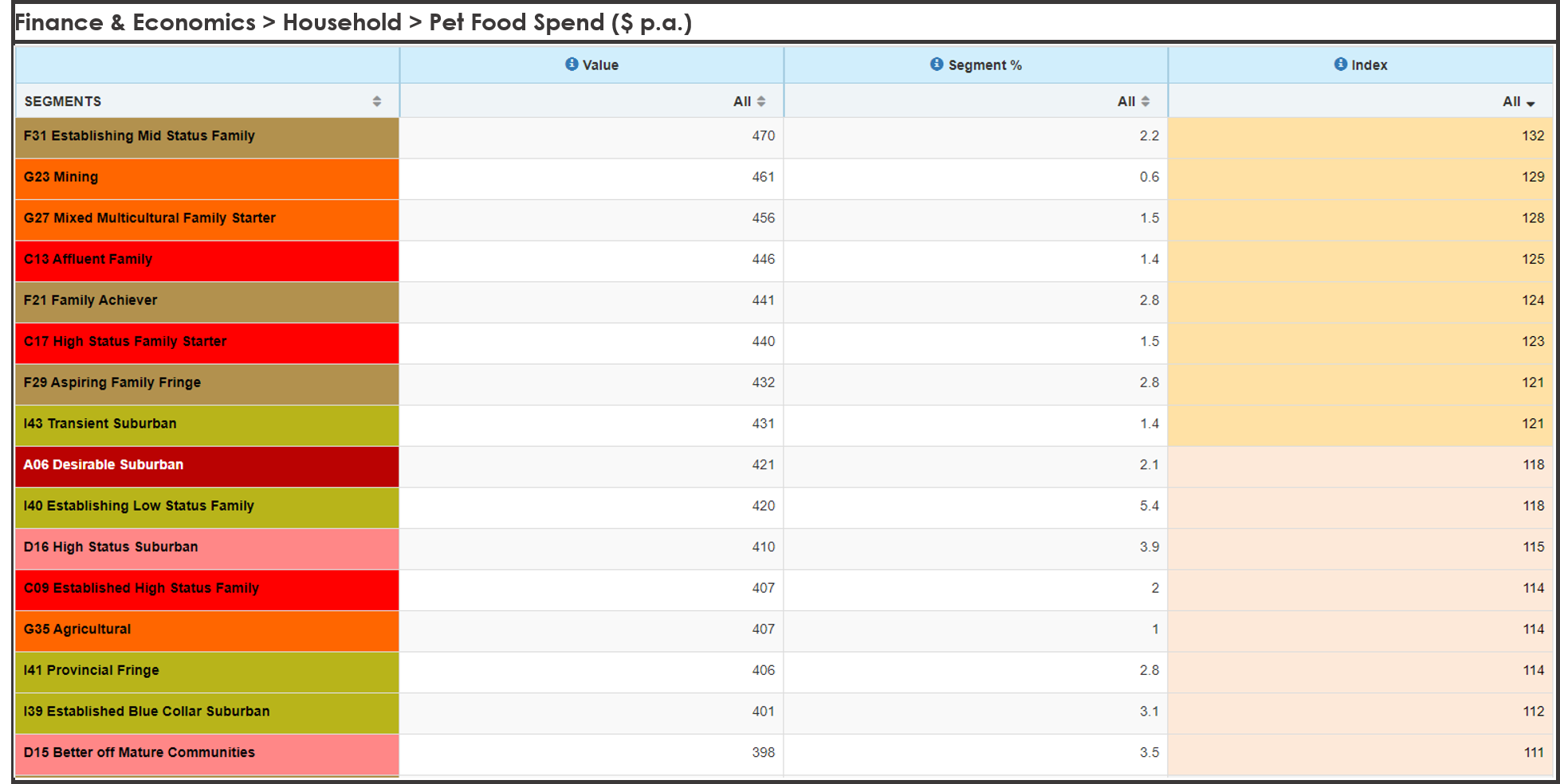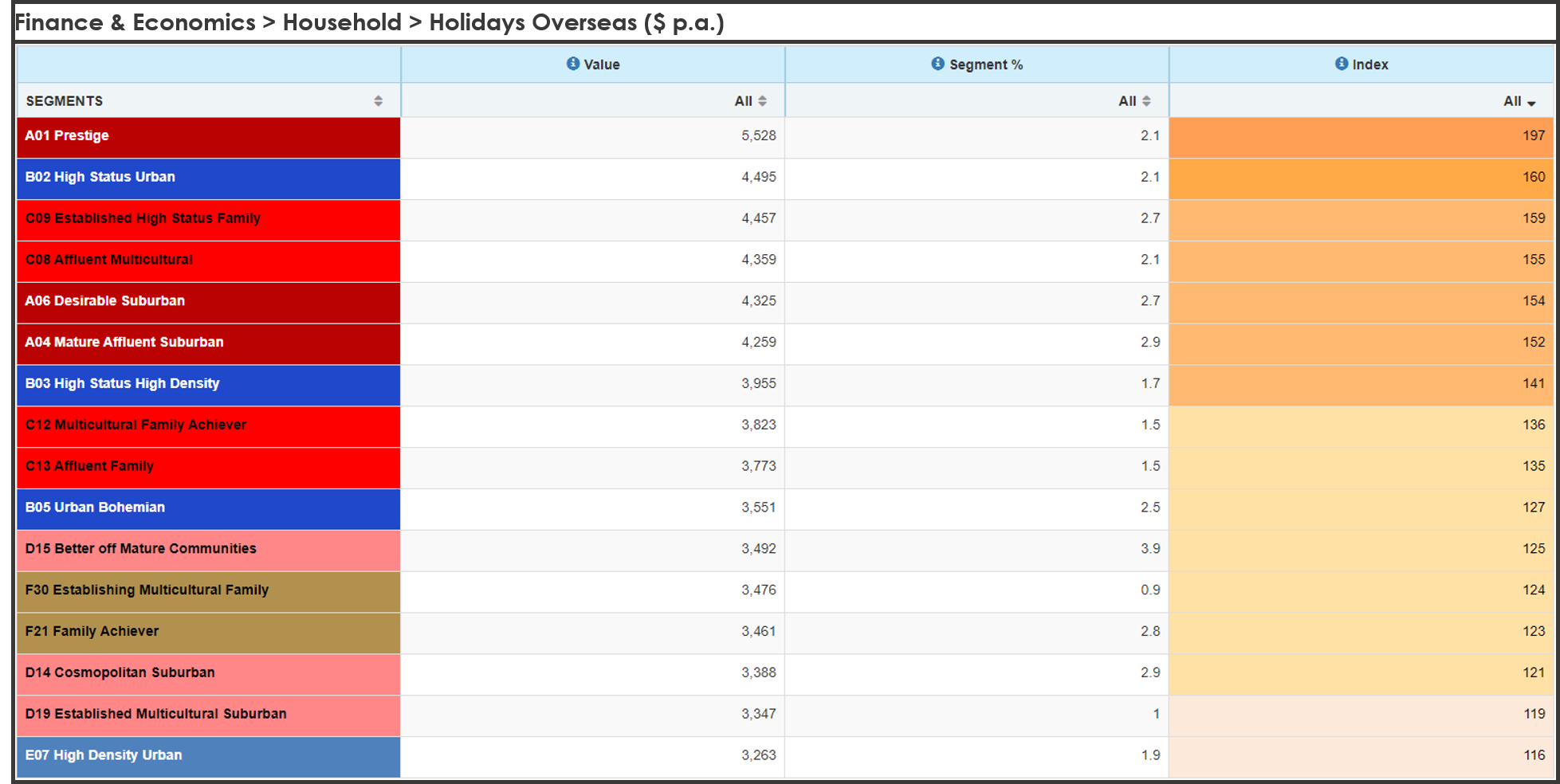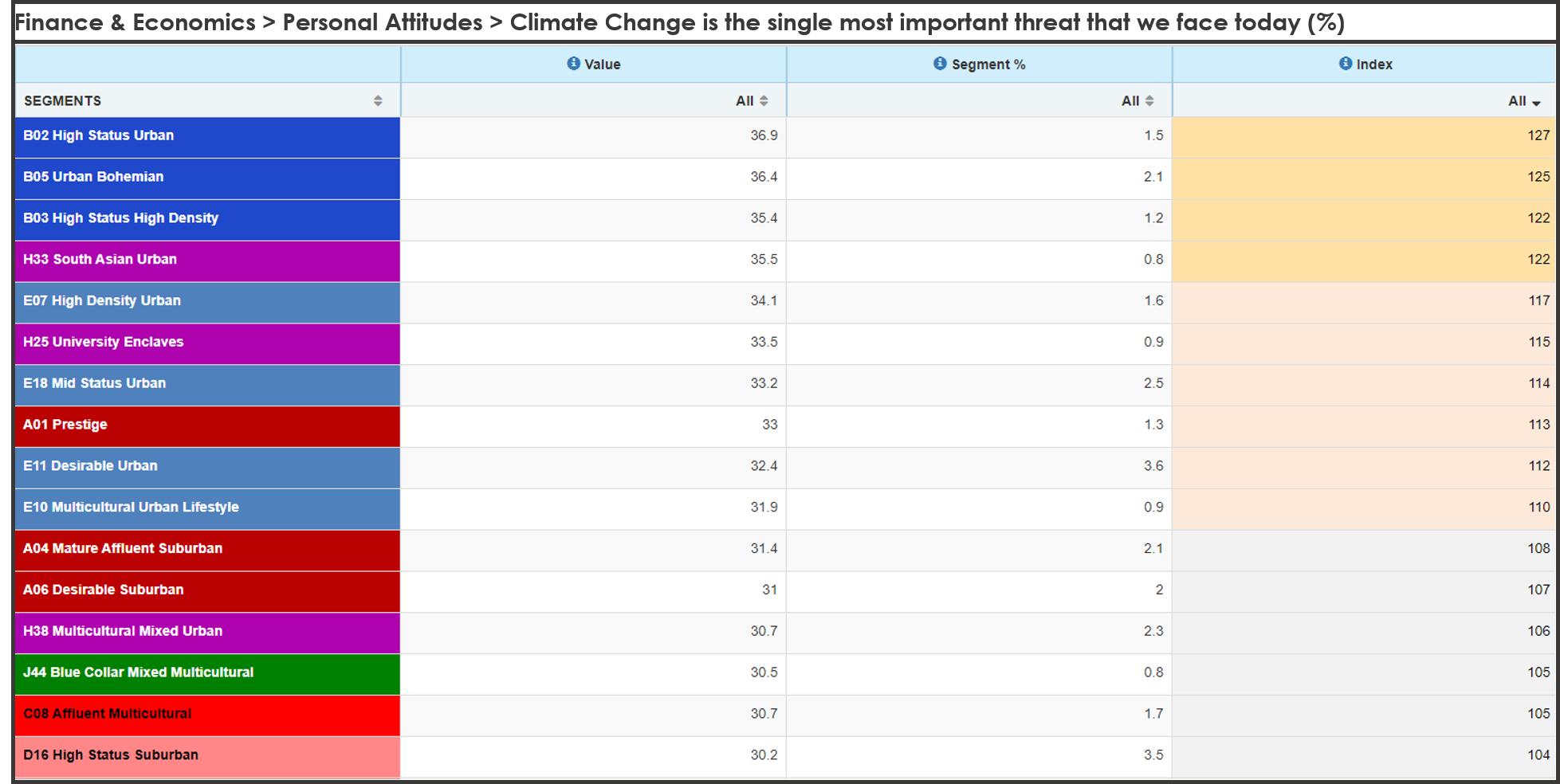Since the release of the 2021 Australian Census last year, we’ve been focused on updating the geoSmart Segments to account for the new census geography (SA1) and the shifts in demographics unfolding across Australia. We’re now pleased to announce the release of the updated geoSmart Segmentation Scheme. This is the seventh version of geoSmart Segments that we have built since our very first model in 1990!
The new geoSmart Scheme has 56 segments nested into 11 groups, and like prior schemes it has been built to maximise the differences in socioeconomic status, multicultural influences, household structures, wallet size, spending patterns, media consumption and lifestyle.
Overall, the new geoSmart Scheme is consistent with the prior version, both in terms of composition and in segment names (for example A01 Prestige, C08 Affluent Multicultural), however the underlying demographics and related data on which its built has moved on as Australia has changed.
In the geoSmart Scheme, the socioeconomic rank is reflected in the segment number, with A1 the highest ranked to K56, the lowest. Against this backdrop, several segments have shifted in their socioeconomic ranking (for example G26 Empty Nest & Retirement, formerly J35), and there are several segments that through demographic changes in areas such as migration, gentrification, and urbanization, have now been renewed or given way to new segments.
Want the Quick Summary? See here
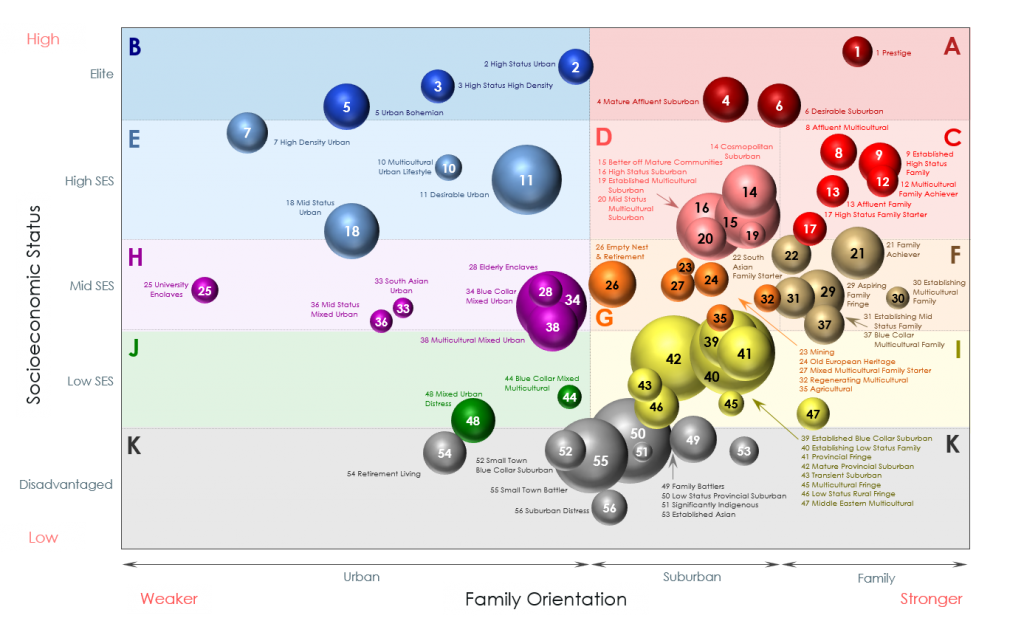
Increasing Migration
Although COVID-19 had a dampening effect on Australia’s migration rate, it has picked up and culturally Australia is continuing its tri-modal multiculturalism with new cultural groups, predominantly Nepalese, Indian, and other South Asian, having the highest growth in the last few years. This has led to the transformation of E17 Multicultural Urban Lifestyle into two segments:
- The now newly promoted E10 Multicultural Urban Lifestyle (2.4% Born in Nepal) which is located in mid to higher socioeconomic areas with varying cultures. Top Suburbs include: Rhodes, Waitara, and Chatswood.
- The new H33 South Asian Urban (22% Born in Nepal) which represents the rising migration of South Asian households (in particular, Nepalese) to areas of traditionally middle to lower socioeconomic status, with strong concentration around public transport routes. Top Suburbs include: Harris Park, Homebush West, and Campsie.

Rising High Density Dwellings
Australia has also been actively building more high-density housing near public transport routes as observed by the increased proportion of dwellings being flat/apartments (13.1% to 14.2% between 2016 and 2021) and proportion of flat/apartments being 4+ floors (38% to 48% nationally between 2016 and 2021).
This has been reflected in the increase of B03 High Status High Density, from 0.9% of households nationally in the prior geoSmart Scheme to 1.2% of households nationally in the new geoSmart Scheme. This growth has expanded outward from where it was already present, along both public transport routes and in new areas where demand has risen for these types of high-density dwellings. A similar but smaller in size effect can also be seen for E7 High Density Urban (Formerly E11).

Gentrification
Gentrification has continued in pockets across Australia and although it is typically captured as part of our yearly population updates, updating the segments has provided the opportunity to further identify its impact:
- Sydney – Tempe has been promoted from G21 Established Multicultural Suburban to C12 Cosmopolitan Suburban.
- Sydney – Granville has been promoted from J38 Blue Collar Mixed Multicultural to H33 South Asian Urban.
- Melbourne – Glenroy has been promoted from J38 Blue Collar Mixed Multicultural to H33 South Asian Urban.
- Brisbane – Coorparoo & Camp Hill has further infilled High Status Suburban and Urban areas with Elite Suburban & Family segments.
- Perth – Coolbellup in South Perth has been promoted to E High Status Urban from J Low Status Urban/I Low Status Suburban.
- Perth – Midvale has been promoted from K51 Family Battlers to G27 Mixed Multicultural Family Starter.
Coolbellup is located in South Perth, near Fremantle
geoTribes Segment Profiler
The geoTribes Segment Profiler has also been updated with the new geoSmart Segments and latest available profiling content (i.e. Demographics, Finance & Economics, and more). This tool is available to licensees of the geoSmart Segments and provides users with a better understanding of the segments beyond what’s published in our extensive geoSmart User Guide. By profiling against a theme, for example Non-English Speaking (CALD), users can rank the segments to find which segments over or under index on it.
Below are a few example profiles across a wide range of measures that shows how differentiating the geoSmart Segment Scheme is:
Availability of the new geoSmart Scheme
- geoTribes Living Insights – the new segments are now fully available and ready to be enabled in clients’ accounts on request.
- geoTribes Quick Append – the new segments are now enabled and will be present in their updated form for all jobs moving forward.
- geoTribes Explorer – the new segments are now enabled and can be used in Mapping, Reporting & Audience Finder.
- geoTribes Segment Profiler – the new segments are now enabled and can be used when profiling.
- Digital Marketplace – the new segments will be available by early September for programmatic activation.
Quick Summary
- The geoSmart Segmentation Scheme now has 56 Segments nested into 11 Groups and is consistent to the prior versions.
- The new scheme has been built on the latest demographics data from the 2021 Census and reflects the underlying changes in Australia.
- Several changes observed include:
- The increasing migration from South Asian countries, which has led to the new H33 South Asian Urban segment.
- The rise in high density dwellings growing B03 High Status High Density and similar segments in size.
- Continuing gentrification in Australia, providing an opportunity to be further identified in the new geoSmart Scheme
- geoTribes Segment Profiler has been updated to include the new geoSmart Scheme and latest profiling content available.
- Update is now live across all products with exception of geoTribes Living Insight where users can transition across to it based on discussion with the RDA team. For geoTribes Explorer, the segments will be soon available.
For more information on the geoSmart Segments visit our website, contact the friendly RDA team on +61 2 8923 6600 or send an e-mail to info@rdaresearch.com

